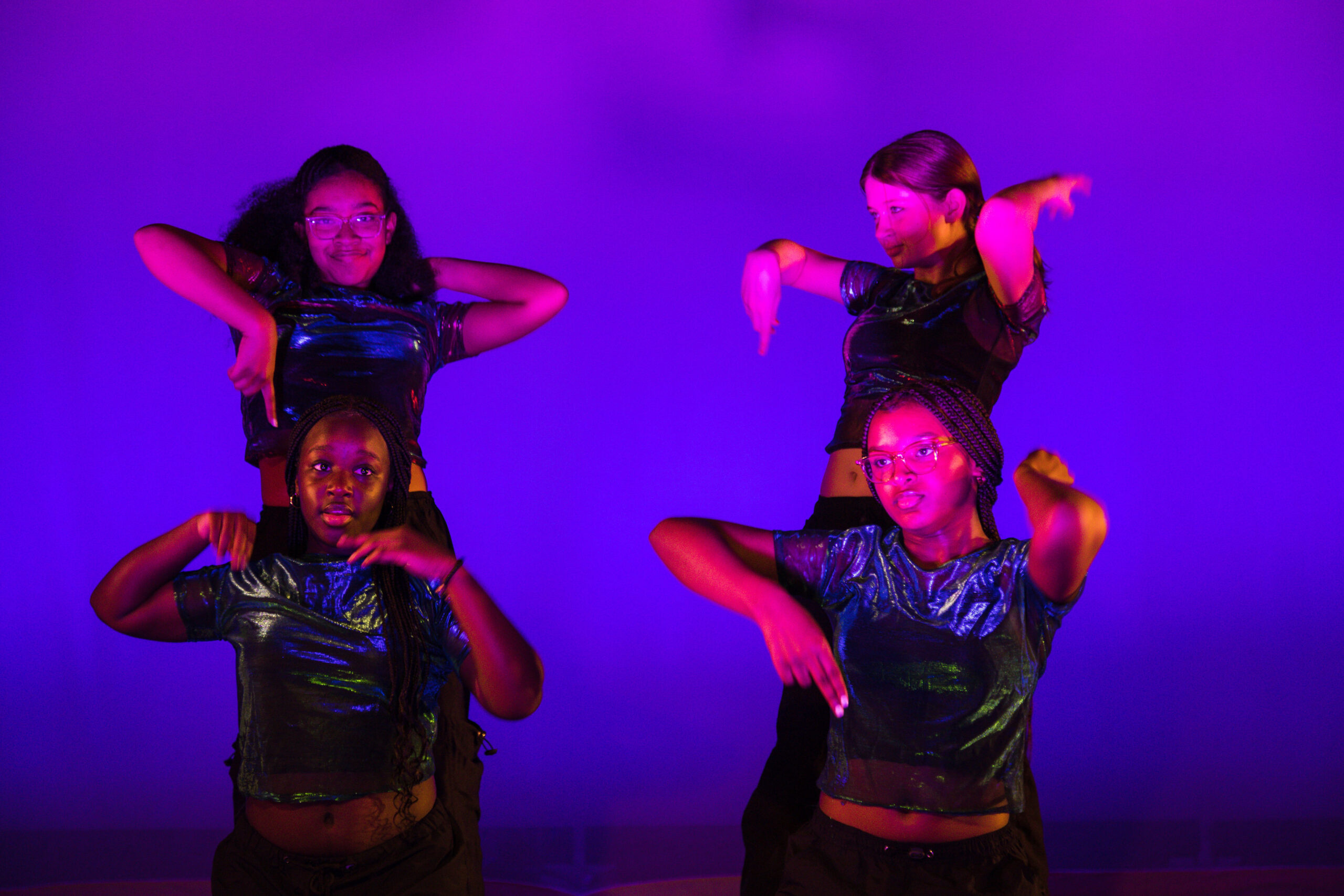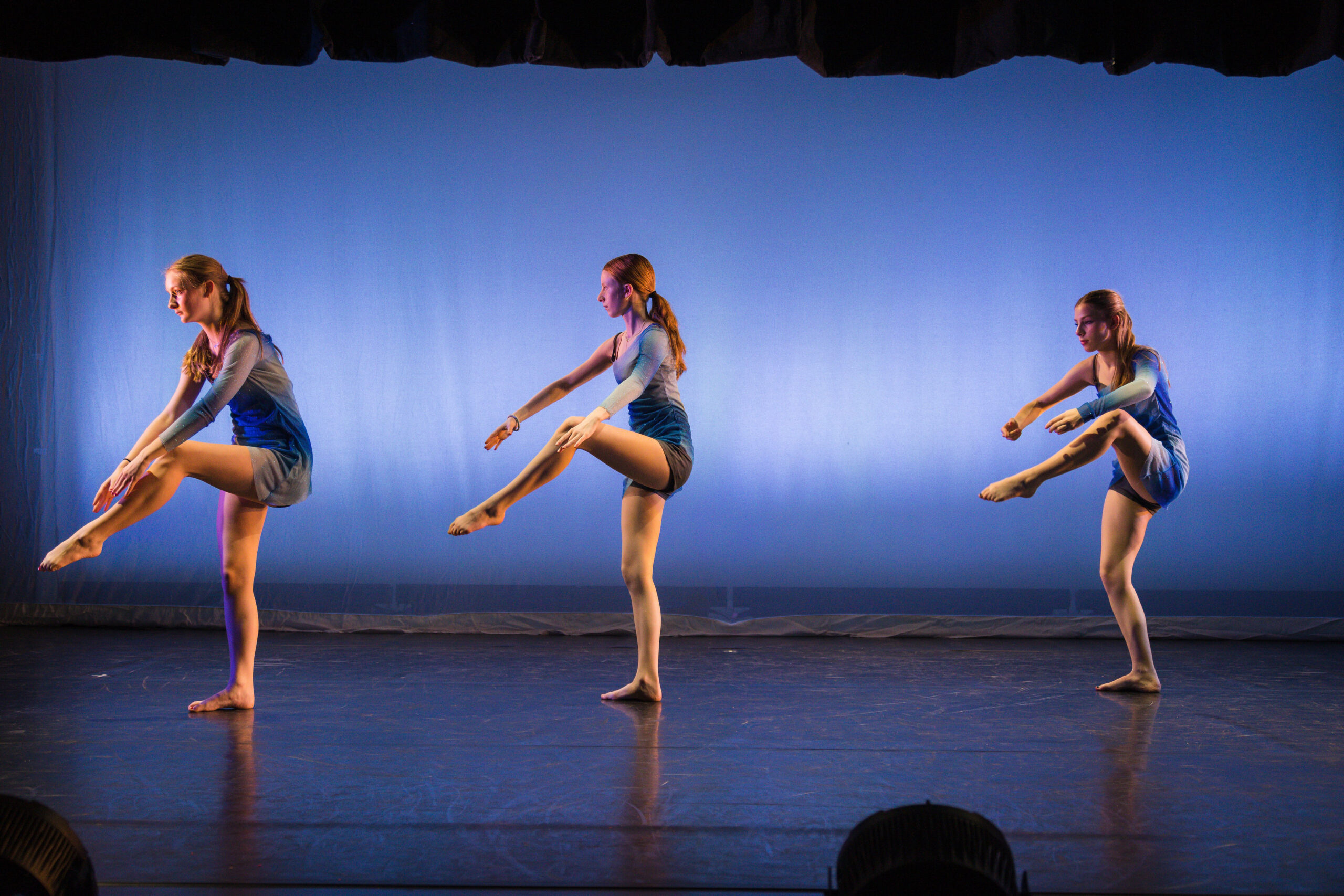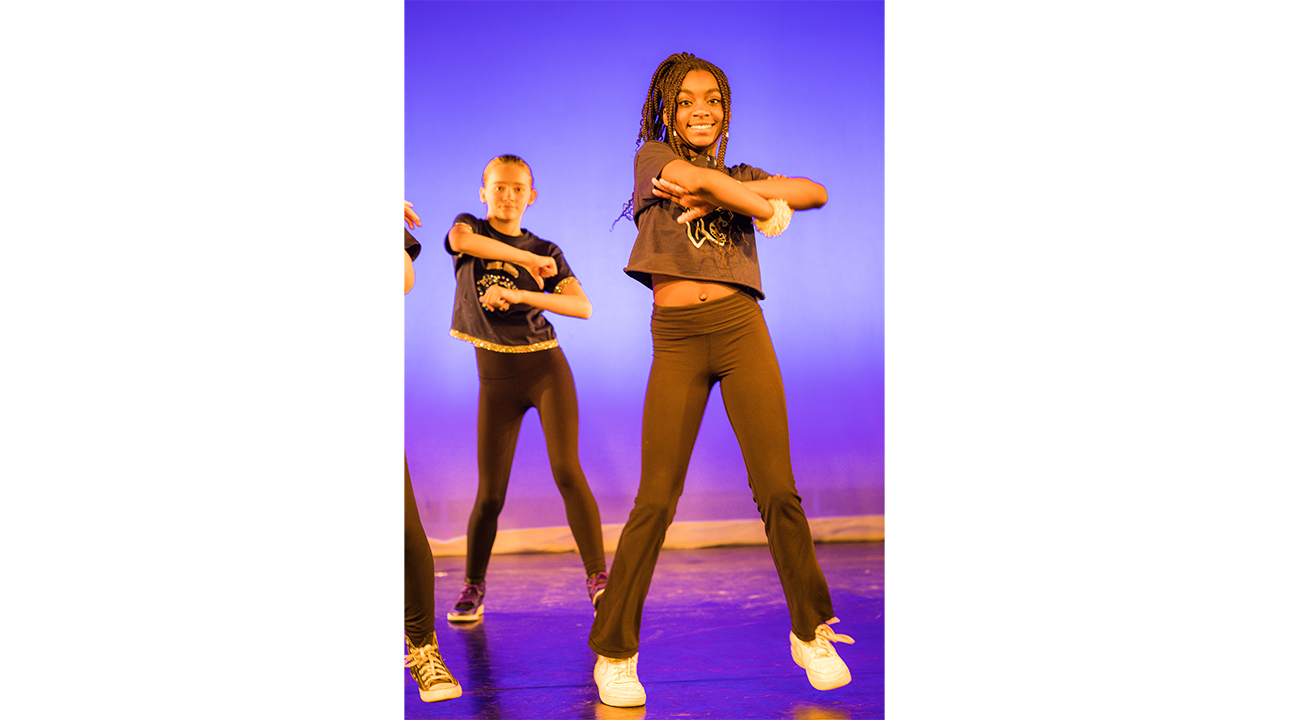Our Dance Program
Dance Studies Alongside the Humanities
Our dance program is offered from Kindergarten through 12th grade and is built on three strands: physical techniques, creative exploration and composition, and critical analysis of choreography and dance in historical and cultural contexts. Students learn dance forms from a variety of cultures that include Afro-Caribbean (Cuban and Haitian Folkloric), Ballet, Capoeira, Chinese dance and martial arts, Classical and folk Indian dances, Jazz (Classic, Musical Theater and Contemporary), Hip-Hop (old-school to current), Latin Ballroom (Bachata, Salsa and Tango), Modern (Dunham, Horton and Limón), Post-Modern (Bartenieff and Cunningham), West-African, and Yoga. Middle and Upper School students choreograph and perform for the annual Spring Dance Concert, and all dance students perform during National Dance Week in April.
Dance By Division
Preschool
Preschool dance follows a creative movement curriculum, in which students explore the elements of dance, time, space, shape, and energy through story and song, all the while developing body awareness, large motor skills, practicing responding to visual, verbal, and auditory cues, and sharing the space with their friends Each class begins with warmup songs and rhymes that involve clapping, stomping, nodding, and shrugging. The songs also include locomotor patterns such as jumping, hopping, skipping, galloping, side sashaying and leaping. We also perform a “story dance” in each class that introduces a theme for exploration such as weather, space, animals, and holidays. These themes make their way into the story dance and elicit specific actions and qualities of movement, e.g., in a squirrel dance students might scamper, climb trees, dig for nuts and burrow into their nests.
Class always ends with a goodbye dance to exit the studio, in which students express their own movement choices based on that day’s theme.
Lower School Dance
In Lower School students move creatively through explorations of time, space, shape, and energy, while developing their body awareness and large motor skills. The dance curriculum is at times connected to course material from other classes, such as when Second Graders explore the movement of the water cycle, and make dances based on ocean animals they are researching in science.
Middle School Dance
Starting in Middle School, students learn Language of Dance symbols to write dance actions, explore the difference between action and energy in Egyptian myths, study Chinese dance and martial arts, Classical and Folk Indian Dance and Yoga, and Greek Folk Dance. The focus in sixth grade dance class shifts to the development of original choreography. Students study West African dance forms to understand their influences on American dance. Students learn about key American choreographers, explore different inspirations for dance-making, and create and perform their own dances.
The focus of the seventh and eighth grade dance curriculum is to study how dance related to social change and activism. Key components of the curriculum include Hip-Hop, the development of Jazz dance from the 1920s to musical theater and music videos, Latin Ballroom, Modern dance, and a community dance project with students from the Brooklyn International High School. 7/8th graders also participate in the Dance Concert.
Upper School Dance
Dance in our Upper School is offered both as a Physical Education course and a more rigorous exploration of the physical, creative, and intellectual components of dance. Students study the techniques of Katherine Dunham (Afro-Caribbean/Modern), West African, Jazz, Hip-Hop, Horton (Alvin Ailey), contemporary modern, yoga, Pilates, and Barteneiff Fundamentals. Concepts include cultural appropriation, improvisation, site-specific choreography, and more.
International Baccalaureate (IB) dance students apply themselves as choreographers, performers, and dance scholars. They use the vibrant dance community of New York City as a resource, conducting research at the New York Library for the Performing Arts at Lincoln Center and attending several professional performances at The Joyce Theater and other venues. Students choreograph a self-portrait solo, learn choreography from two guest artists, research a choreographer of their choice, and more.






